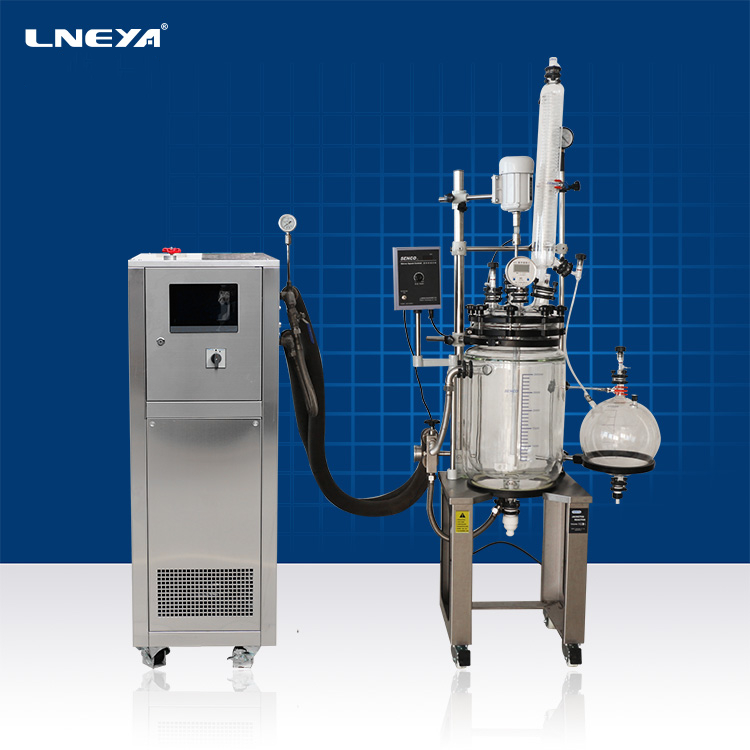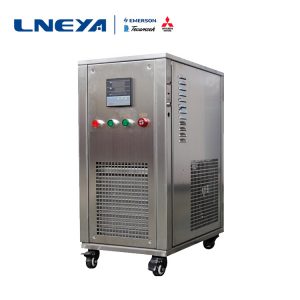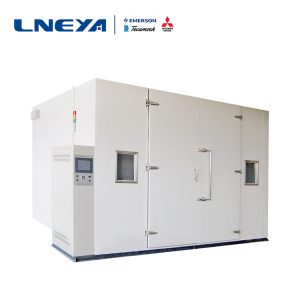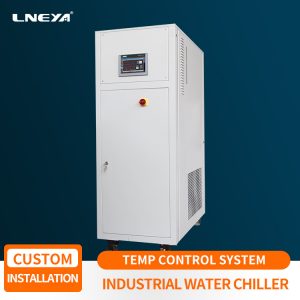Effect of cooling and heating system on glass reactor
The glass reactor is compact in volume and clear in structure, and can be conveniently operated in series and parallel in a flexible manner, fully satisfying various process occasions; the reaction path does not have any metal contact, and the inlet and outlet ports use a special conical connector to facilitate the rapid connection of PTFE pipeline In addition, special import and export joints can also be customized according to specific needs. If you use LNEYA’s cooling and heating system equipment, you don’t have to worry about the size of the joint at all. We will match the joint according to your import and export flow.

The inner container of the double-layer glass reactor is equipped with reaction materials, and can be evacuated and speed-adjusted at the same time. The interlayer can introduce freezing liquid, water and high-temperature liquid to heat and cool the materials. It is used for synthesis of new materials in chemistry, fine chemicals and biopharmaceutical Wait for experiment, pilot and production. It can be combined with circulating water type multi-purpose vacuum pump, diaphragm vacuum pump, low temperature circulation (vacuum) pump, circulation cooler, constant temperature circulator, low temperature cooling liquid circulation pump, closed refrigeration heating circulation device, etc. to form a system device.
The temperature range of LNEYA cooling and heating system is -120 ℃ to 350 ℃, with high precision and intelligent temperature control. The ultra-high temperature cooling technology can directly cool down from the high temperature of 300 ℃. Since only the heat transfer medium in the expansion chamber is in contact with the oxygen in the air (the temperature of the expansion tank is between normal temperature and 60 ℃), the heat transfer medium can be reduced. High temperature heat medium will not evaporate at high temperature, and continuous control can be realized in the range of -80 ℃ to 190 ℃.
The glass reactor can be used in a large temperature range from high temperature (300℃) to low temperature (-80℃); it can work under normal pressure and vacuum conditions, and the vacuum degree can reach below 0.095MPa under static conditions. After the reaction of the interlayer cooling or heating solution, it can be completely eliminated without liquid accumulation. Choosing a good temperature control system equipment is inevitable for the reaction process and material testing.
Raccomandazioni correlate
-
Explosion-proof high and low temperature one machine evaporator use note
1063Each accessory in the explosion-proof high and low temperature integrated machine is more important. Among them, the evaporator has one of the four major accessories, and the refrigeration effect has a certain degree. What are the main choices of ...
Visualizza i dettagli -
What are the common debugging problems in low temperature refrigeration baths?
1361When the low-temperature cooling bath is in debugging, if the local cooling effect is not good, the system may be blocked by foreign matter or the system design is unreasonable and cannot be adjusted normally. At this time, LNEYA removes foreign m...
Visualizza i dettagli -
Hot and cold rapid temperature change test chamber common fault
1030In the high-temperature test of the hot and cold rapid temperature change test chamber, once the temperature change does not reach the test temperature value, in this case, the electrical system can be inspected and the faults can be eliminated on...
Visualizza i dettagli -
How does the Industrial Water Chiller System Work?
1252When using industrial machinery, a cooling system may be required to prevent the machine from overheating. Refrigeration equipment can effectively keep materials in the optimal temperature range, but how does the chiller work? Understanding the wo...
Visualizza i dettagli
 Refrigeratori industriali LNEYA Produttore Fornitore
Refrigeratori industriali LNEYA Produttore Fornitore














